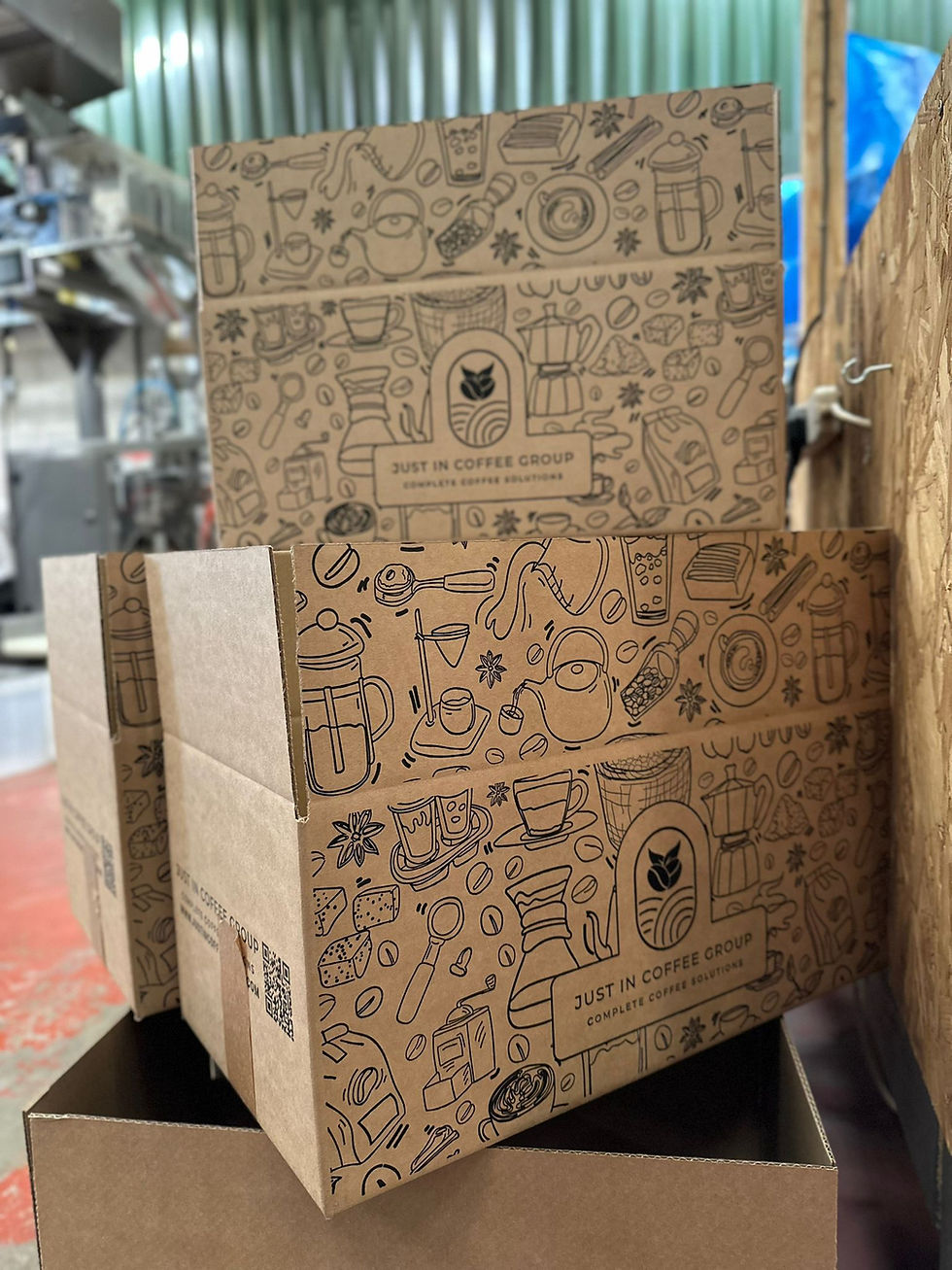Choosing the Perfect Coffee Cup: Essential Considerations for Your Coffee Shop
- Justin Cornelius
- Mar 28
- 3 min read
Updated: Apr 24

Over the last few weeks of visiting customers, dialing in grinders, and making sure setups are right before a busy springtime, I've noticed something important: the vast variation in cup sizes and styles. This has inspired me to write about how to select coffee shop cups and mugs effectively.
Much of the focus in the coffee industry tends to be on beans, brewing methods, and barista skills—and rightly so. But there’s one element that often gets overlooked despite playing a critical role in customer experience: the humble coffee cup.
Importance of Cup Selection in Coffee Shops
Choosing the right cup size, style, and material isn't just about looks or branding. It enhances flavor, maintains temperature, manages costs, and visually conveys the character of each drink. For coffee shops dedicated to quality and presentation, these details matter immensely.
1. Size Matters: Strength Meets Volume
Different coffee styles require different volumes to preserve their intended strength and balance.
Espressos should be served in small (usually 3–4oz) demitasse cups, concentrating the rich, bold shot while maintaining its temperature.
Flat whites (typically 5–6oz) are best enjoyed in tulip-style cups. These control the milk-to-coffee ratio, delivering that perfect velvety mouthfeel.
Lattes and cappuccinos can vary in volume (8–12oz). A cappuccino should be in a slightly smaller cup with a wider mouth to support froth and latte art, while a latte thrives in a taller cup.
Filter or batch brew coffee is usually best served in a 10–12oz cup or mug, offering volume without making it feel watered down.
Providing the right size helps baristas achieve balance and ensures customers get the flavor the roaster intended.
2. Milk-to-Coffee Ratio: Balance and Cost Control
Using the right cup size is vital for achieving the ideal coffee-to-milk ratio—a key factor in both taste and cost.
Too much milk can drown out the flavor of the espresso, especially in an oversized cup.
Conversely, too little milk in larger drinks can make them taste overly strong and imbalanced.
From a business perspective, milk is one of the biggest hidden costs in coffee. Overserving by even 20–30ml per drink, across hundreds of cups a day, adds up quickly. Choosing the right cup size helps baristas pour accurately and consistently, reducing waste while protecting your margins without sacrificing quality. This is particularly important when using plant-based alternatives, which often come at a premium and have different foaming properties. A well-sized cup ensures that each drink is both delicious and economically viable.
3. Heat Retention: Don’t Let It Go Cold
The thickness and material of the cup significantly affect temperature retention.
Ceramic cups are often the go-to for dine-in experiences. Their thick-walled design holds heat longer and feels premium in hand.
Double-walled cups (ceramic or glass) are ideal for serving espresso or filter drinks in-house. They insulate the coffee without burning customers' hands.
Takeaway cups should also be double-walled or use sleeves—not just for heat, but also to support the drink’s aroma and mouthfeel while on the go.
Serving temperature is a crucial aspect of the sensory profile. A well-chosen cup keeps coffee at an optimal temperature without compromising comfort or taste.
4. Aesthetic & Print: Branding Beyond the Beans
Your cups serve as walking billboards. Every takeaway cup is an opportunity to reinforce your brand identity.
Color schemes and logos should align with your shop's aesthetic. Whether you're minimal and modern or rustic and earthy, your cup should reflect that.
Custom artwork or seasonal designs can generate visual interest and encourage social media sharing—hello, free marketing!
Even in-house crockery can be subtly branded with embossed logos or printed messages at the bottom—little touches that create lasting impressions.
5. Style by Drink: Visual Cues for the Customer
Using different cup shapes and colors for various drinks not only aids baristas but enhances customer understanding and differentiation.
A classic cappuccino in a wide-mouthed cup is instantly recognizable, just like a latte in a taller glass or ceramic mug.
Black coffees can look more refined in smaller, handle-less cups, while iced drinks shine in clear plastic or glassware to showcase their layers.
Consider using unique cups for signature or seasonal drinks—something customers will remember and connect to a standout experience.
These visual cues help manage customer expectations and elevate your service's feel.
Final Sips: The Details Make the Difference
At first glance, a coffee cup might seem like a minor decision in running a coffee shop. However, it’s one of the most tactile and visually consistent elements of your brand. It impacts how your drinks look, feel, taste, and how your shop is remembered.
So next time you review your inventory or redesign your space, don’t overlook the vessels that carry your craft. Choose wisely. Your coffee—and your customers—deserve it.
You can read more about our top coffee cup selections.





Comments